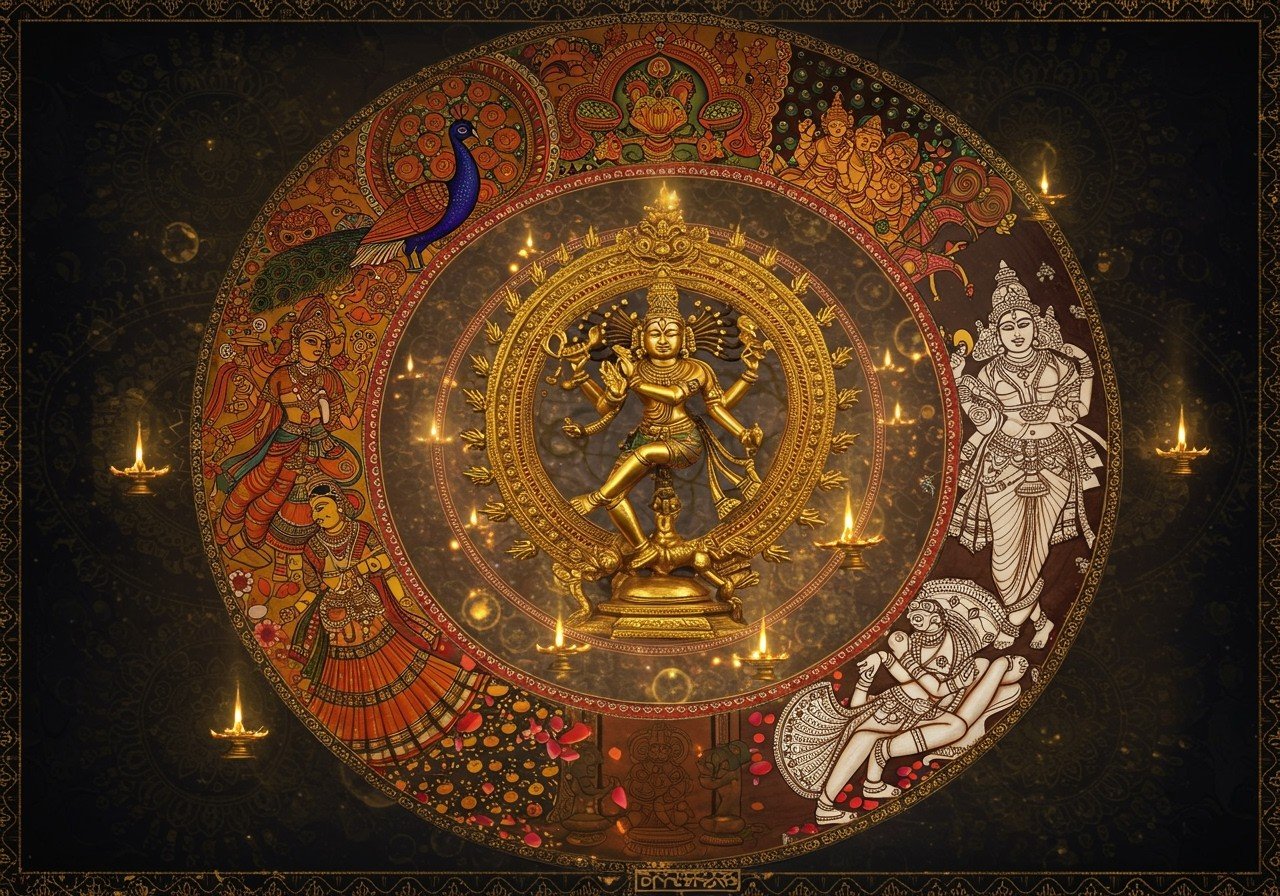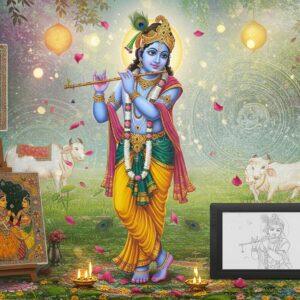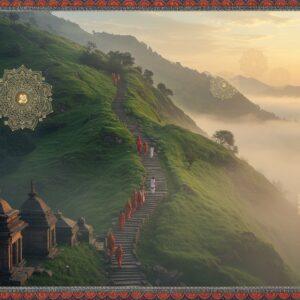
Indian art is a rich tapestry of diverse styles, techniques, and traditions. This article explores the regional variations in Indian art, shedding light on how different regions of India have contributed uniquely to the country’s artistic heritage. For culturally rooted Indians who appreciate tradition and authenticity, this exploration promises to be both informative and inspiring.
Historical Context of Indian Art
Indian art has evolved over centuries, influenced by various dynasties, religions, and cultural exchanges:
- Maurya and Gupta periods (322 BCE – 550 CE): Laid the foundation for classical Indian art with significant contributions from Hinduism, Buddhism, and Jainism. These periods saw the development of iconic sculptures and architectural styles.
- Mughal period (1526-1857): Introduced Persian influences, enriching art with new styles and techniques. This era is renowned for its miniature paintings, grand architecture like the Taj Mahal, and intricate metalwork.
- British colonial period (1757-1947): Brought a fusion of Western and Indian art forms, leading to modern and contemporary art movements seen today. This period saw the rise of artists like Raja Ravi Varma, who blended European academic style with Indian subjects.
Indian Art in Bhopal
The city of Bhopal is renowned for its unique blend of traditional and tribal art forms:
- Bhimbetka rock shelters: A UNESCO World Heritage site showcasing prehistoric cave paintings from the Paleolithic era, offering a glimpse into ancient artistic expressions.
- Gond art: Tribal painting from the Gond community characterized by intricate patterns and vibrant colors, often depicting mythological narratives and natural elements.
- Bharat Bhavan: A multi-arts complex featuring galleries, theaters, and a library for contemporary and traditional arts, promoting a vibrant cultural scene.
- Historical influences: Connections to the Nizams and Mughal Empire have left their mark on the city’s architecture and artistic traditions, creating a unique cultural blend.
Indian Art in Delhi
Delhi, the capital city, is a melting pot of artistic traditions and modern innovations:
- National Gallery of Modern Art: An extensive collection of modern Indian art, including works by Raja Ravi Varma and Amrita Sher-Gil, showcasing the evolution of Indian art.
- Mughal heritage: Evident in architecture like Red Fort and Humayun’s Tomb and miniature paintings depicting courtly life and historical events, reflecting the grandeur of the Mughal era.
- Street art: Lodhi Art District showcases murals by local and international artists, transforming public spaces into vibrant canvases.
- India Art Fair: An annual event attracting artists, collectors, and enthusiasts globally, providing a platform for contemporary Indian art.
Indian Art in Jaipur
Jaipur, the Pink City, is famous for its rich tradition of Rajasthani art and crafts:
- Miniature paintings: Known for intricate details and vibrant colors, often depicting royal courts, hunting scenes, and mythological stories.
- Albert Hall Museum: Houses a vast collection of Rajasthani art, including paintings, sculptures, and textiles, showcasing the region’s artistic heritage.
- Blue pottery: A unique craft combining Persian and Indian techniques, resulting in beautiful turquoise-hued ceramics.
- Jaipur Literature Festival: Includes art exhibitions and performances, making it a cultural hotspot that celebrates both literary and artistic expressions.
Regional Variations in Indian Art
The diversity of Indian art is evident in distinct styles across different regions:
Madhubani Art
Madhubani painting from Bihar is renowned for its geometric patterns and mythological themes. These paintings, traditionally done on walls, now adorn various surfaces and depict Hindu deities and scenes from epics like Ramayana.
Pithora Painting
Pithora painting from Gujarat reflects the vibrant culture of the Rathwa community. It uses bold lines and bright colors to celebrate tribal life, rituals, and their connection with nature.
Warli Painting
Warli art from Maharashtra is characterized by simplistic human and animal figures. This tribal art form, traditionally done on walls using rice paste, depicts daily activities, social events, and nature using minimalistic designs.
Kalamkari Painting
Kalamkari from Andhra Pradesh combines hand-painted or block-printed techniques. These textiles, known for their intricate details, feature designs inspired by mythology, nature, and historical narratives.
Bastar Tribal Art
Bastar Tribal Art from Chhattisgarh showcases bold lines and celebrates tribal life. It uses metal sculptures, wood carvings, and paintings to depict local customs, beliefs, and their relationship with the environment.
Poojn.in: Your Gateway to Authentic Indian Art
Poojn.in, India’s leading cultural goods and services store, offers a diverse collection of items reflecting regional art traditions. We proudly support artisans and preserve these unique art forms.
- Sindoor (Vermilion): Enhance your spiritual practices with our authentic Sindoor, an essential item in Hindu traditions. Explore our variety of Sindur and Sindoor Dibbis, handcrafted with traditional designs.
- Clay Items (Hadi Kundo): Discover our collection of custom hand-printed clay pots (Hadi Kundo) that showcase regional pottery techniques, perfect for rituals and adding a touch of tradition to your home.
- Maa Lakshmi Idols: Invite prosperity and blessings with our exquisite Astadhatu brass Maa Lakshmi idols, meticulously crafted by skilled artisans using traditional methods.
Contact our expert team at 91 7908548235 for personalized guidance on selecting regional art pieces or ritual items. Visit our Clay Items section to explore more traditional handcrafted products representing various regional art styles.
Celebrating India’s Artistic Heritage
Indian art has historically influenced regions like Tibet, South East Asia, and China. Traditional Indian paintings are deeply linked to specific states and their cultural heritage. From Bhopal’s tribal traditions to Delhi’s Mughal legacy and Jaipur’s Rajasthani crafts, each region offers unique artistic expressions. For those who cherish tradition, exploring regional differences in Indian art is an enriching journey into India’s creative spirit. Whether you are an art enthusiast or a curious learner, regional Indian art promises to inspire and connect you to the vibrant tapestry of India’s cultural legacy.
FAQs on Indian Art
What defines Indian art? Indian art encompasses a wide range of visual arts originating and evolving in India, including paintings, sculptures, pottery, and textiles, deeply rooted in the country’s cultural and historical heritage.
What distinguishes the regional styles of Indian art in Bhopal? Bhopal is known for its blend of tribal and traditional art forms, particularly Gond art with its vibrant colors and intricate patterns, alongside Mughal and Rajput influences in architecture and paintings.
What makes Delhi’s Indian art stand out? Delhi’s Indian art is unique due to its historical significance as the capital, blending Mughal miniature paintings with contemporary art galleries and modern installations, reflecting its diverse heritage.
Why is Jaipur celebrated for its Indian art? Jaipur is renowned for its traditional Rajasthani art, including miniature paintings, blue pottery, and handcrafted textiles, reflecting the royal heritage and vibrant culture of Rajasthan.


